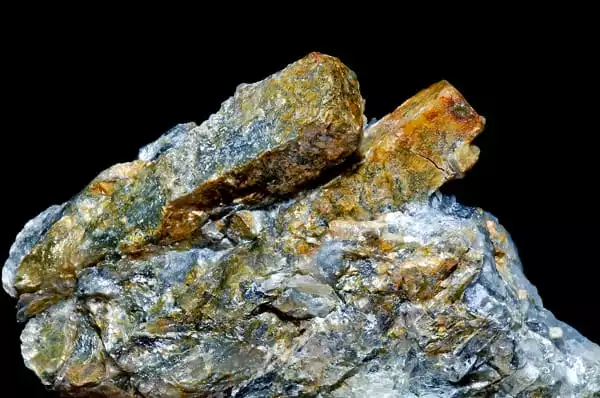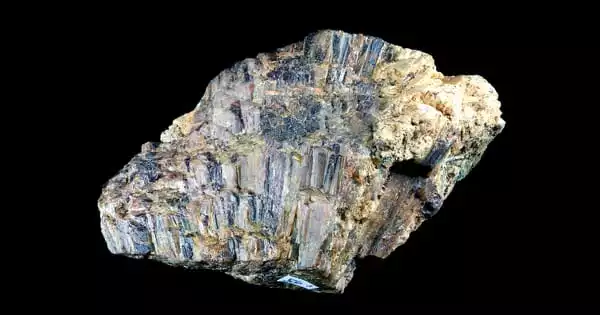What is Andalusite?
Andalusite is an aluminosilicate mineral with the formula Al2SiO5. It develops when argillaceous rocks (such as shale) are subjected to regional and contact metamorphism at moderate to medium metamorphic temperatures and pressures.
Andalusite is a mineral that forms rocks. It is most usually found in schist, gneiss, and hornfels. A trace quantity can also be found in granite and granitic pegmatite.
The most common application for andalusite is in the manufacture of heat-resistant bricks and ceramic items used in the steel-making and metal-processing industries. It is also utilized in the production of chemicals, glass, and a range of ceramic items. Mineral collectors prize exceptional andalusite crystals. Gemstones are created from specimens with exceptional color and clarity.
History
Andalusite was named by Jean-Claude Delamétherie in 1798 after the Spanish province of Andalusia, where it was found. However, the original form of andalusite was discovered before Christ’s birth in El Cardoso, a distinct Spanish location. Andalusite is frequently referred to as “poor man’s Alexandrite.” One of the other names for andalusite is “cross-stone.” According to Greek mythology, an Andalusite is a kind of Chiastolite, according to Greek mythology. The ancient Greeks employed these opulent gems for both medicine and decoration.
Physical Properties of Andalusite
| Category | Nesosilicates |
| Formula | Al2SiO5 |
| Composition | Aluminum silicate |
| Color | Pink, violet, yellow, green, white, gray; in thin section, colorless to pink or green |
| Crystal system | Orthorhombic |
| Crystal class | Dipyramidal (mmm) |
| Hardness | 6.5 – 7.5 |
| Fracture | uneven to subconchoidal |
| Luster | Vitreous |
Andalusite Stone Healing Properties
Andalusite is also known as the “Seeing Stone” due to its ability to carefully and quietly picture one’s inner nature objectively. It is beneficial for you to examine and analyze every aspect of the topic in order to arrive at an unbiased judgment free of apprehension and with a sensible attitude. It makes you recognize the need for self-sacrifice, but it is not required. It instills prudent thinking in you so that you can keep track of every hidden trace of the problem and unravel it. It promotes the obvious features of your personality and catalyzes changes in your life.
ANDALUSITE AND PHYSICAL HEALTH
Andalusite is utilized in crystal therapy and folk healing to treat conditions such as AIDS, eye issues, calcium, oxygen, iodine deficiency, and water retention. Andalusite is a general tonic. It is a fantastic tonic for anyone who has been unwell and has a weak vibrational field that needs to be protected. Andalusite regulates the neural system as well as the energetic field.

ANDALUSITE AND Emotional Healing
Andalusite gemstones represent freedom, assisting the user in learning to live independently. Andalusite is thought to greatly reduce dread in people who are near death; this stone is thought to aid them in accepting their death cheerfully. This lovely stone may help with self-control and life balance, to name a few things.
This stone allows the wearer to cope with stress and anxiety by dispersing any bad energy in his environment. Andalusite has the capacity to transform strife into peaceful coexistence.
Andalusite, the seeing stone, operates peacefully and aids the user in determining one’s character without being biased. The user of this stone will be able to see all sides of a situation. Andalusite crystals are thought to offer strong protective and creative energies, allowing the user to balance their dilemma with pragmatism.
After wearing an andalusite gemstone, the user will be more focused on his objective since it helps him to keep calm during his difficult moments.
Andalusite Sources
Brazil is currently the major source of these jewels, where they can be discovered as pebbles on stream banks or on hillsides behind layers of clay.
The following are some more significant gem sources:
- United States: California; Colorado; Maine; Massachusetts; New Mexico; Pennsylvania; South Dakota (Black Hills).
- Belgium: blue crystals.
- Myanmar: dull green material found in gem gravels.
- Sri Lanka: gem material found as waterworn pebbles, sometimes large size.
- Australia; Austria; Madagascar; Russia; Spain; Zimbabwe.





